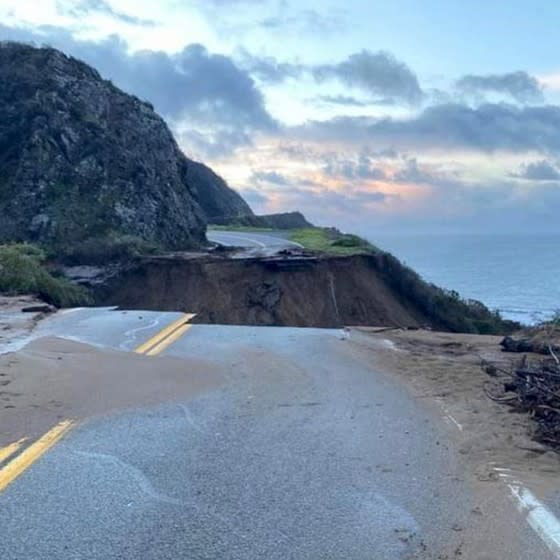Op-Ed: Do humans really need access to every place on earth?

My husband and I usually drive down Highway 1 together — you cannot, even for one moment, watch the road and look at the scenery at the same time.
I cherish every trip we have made to Esalen or the Henry Miller Library or across Bixby Bridge. I love Big Sur. In Pebble Beach it’s one beautiful estate after another, clothed in fog.
But I am aware that we endanger the region with every trip. It’s not just the tourists, but also day-trippers like us. We drive down the roads, leave things on the beaches (in spite of the rules), run over animals who can’t cross the road quickly enough.
Perhaps we endanger the trees, too — the oaks are my favorite thing about the Monterey Peninsula ecosystem. I have never seen trees that are such individuals. Some spread out like giant stalks of broccoli, some lean into the wind, raising their limbs like elbows, some seem to flock across steep green hillsides, reaching for the sun. Often, I don’t get very far on my walks because I stop so frequently to stare at the oaks. Or the cypress. Or the pines (one of my favorite parks in the mountains between Carmel and Monterey is gaspingly fragrant).
Sometimes I wonder if people even belong in the world’s most fragile and beautiful places. The other day, my cousin, who lives in St. Louis, told me we should leave California — that I should be wary of the fires, the earthquakes, the mudslides. He told me that living in the state is becoming too risky because of overpopulation and climate change. And then I went out and looked at the glen above our house, at the deer trotting through, pausing to glance at me, at the ground squirrels, the sparrows, and the hawks floating on the breeze.
Why don’t I leave? What am I waiting for? Well, the daffodils that are blooming and the lupine soon to come. I have never lived anywhere like this.
It can be dangerous along the coast. Highway 1 is evidently unsafe. The recent collapse of a portion of the road two miles south of Esalen isn’t the first time. In 2017, a huge mudslide covered a section of the highway with, in some places, 40 feet of soil and rock. Then, as now, residents had to be transported to their homes, sometimes by helicopter.
Last year, the Dolan fire burned 125,000 acres, and after five months was under control, but still not quite out. There were lots of fires in the area because of dry lightning, but the Dolan fire, which started two days later, seems to have been sparked by an arsonist.
There are a lot of people, like my cousin in St. Louis, who think no one should live here, even if they are off the grid, as some are. (And by the way, my response to my cousin was, “Have you forgotten about the New Madrid fault, which threatens your state too? And, oh yeah, tornadoes.”)
Once I drove all the way down to Morro Bay, pulling off the road in turnouts to get out and look around. One thing you notice about Highway 1 is that it was etched into the cliffs. The etching south of Big Sur was done by San Quentin prisoners who were paid 35 cents a day in the 1920s and 1930s. The engineers and the workers had to figure out how to construct 35 bridges. Six more were added later.
When I drove it, I was cautious, because there was a recent story of a sad accident — an English couple was driving a rental car, got confused, and ended up on the left side of the road rather than the right. They were hit and went over the edge. But every mile of my trip was beautiful and enlightening. The air was crystalline, the wind was brisk and I saw what might have been a condor, as well as a pod of breaching whales.
But even if I am walking, not driving, through the forests and down past imposing ravines, on cliffs above the Pacific, or through empty meadows, I often wonder if I should be here, if I should feel guilty about invading the natural landscape. There are plenty of spots near me that personify the beauty of nature being left alone and of animals, insects and plants that are better off without us, even those of us who aren’t carrying guns or snares, who just want to look.
Perhaps Highway 1 will turn out to be an experiment that went wrong, and the state will decide that maintaining those precarious two lanes and those 41 bridges isn’t worth it. We have the 101. We can go where we need to go. The mountains would prevent most of us, locals and tourists, from invading that delicate and singular space, and allow it to return to a healthier ecosystem, a sanctuary for the mountain lions, the coyotes, the deer, the hawks, the sparrows, the trees, and the native plants that helped create it in the first place.
One of the critical questions of our time is, I think, do humans really need to have access to every place on Earth?
Jane Smiley is a Pulitzer Prize-winning novelist. She has written more than 20 fiction and nonfiction books.
This story originally appeared in Los Angeles Times.
